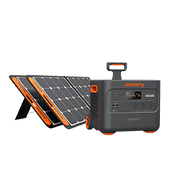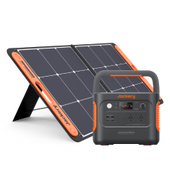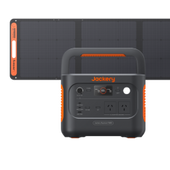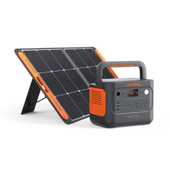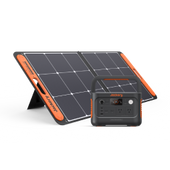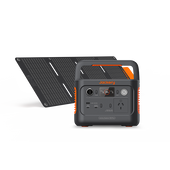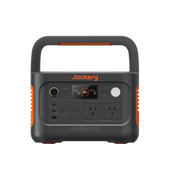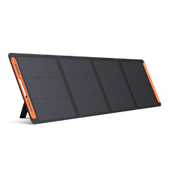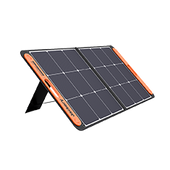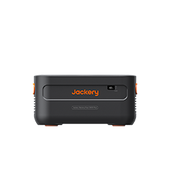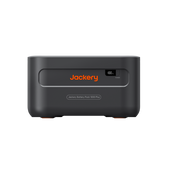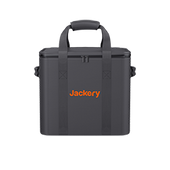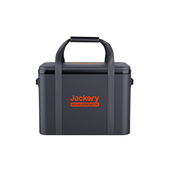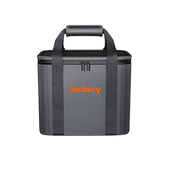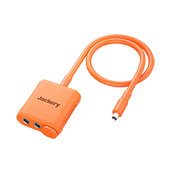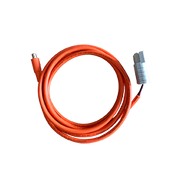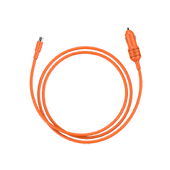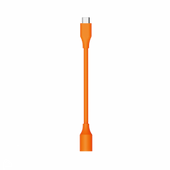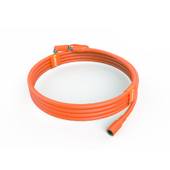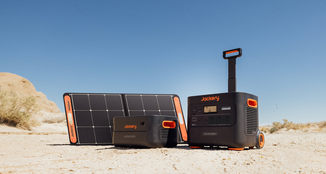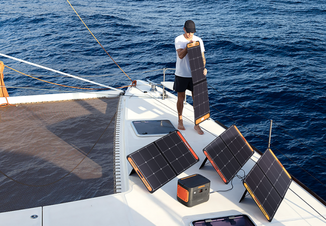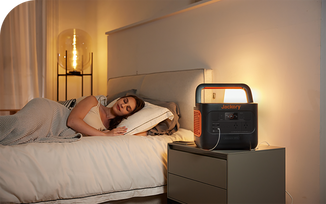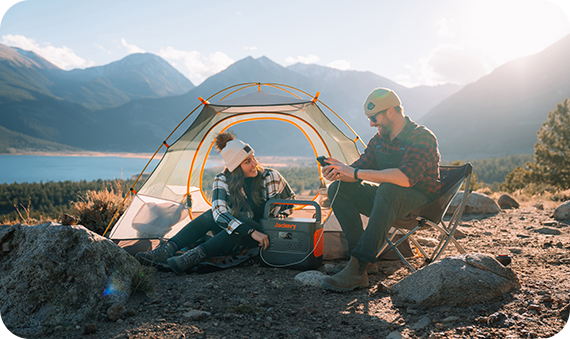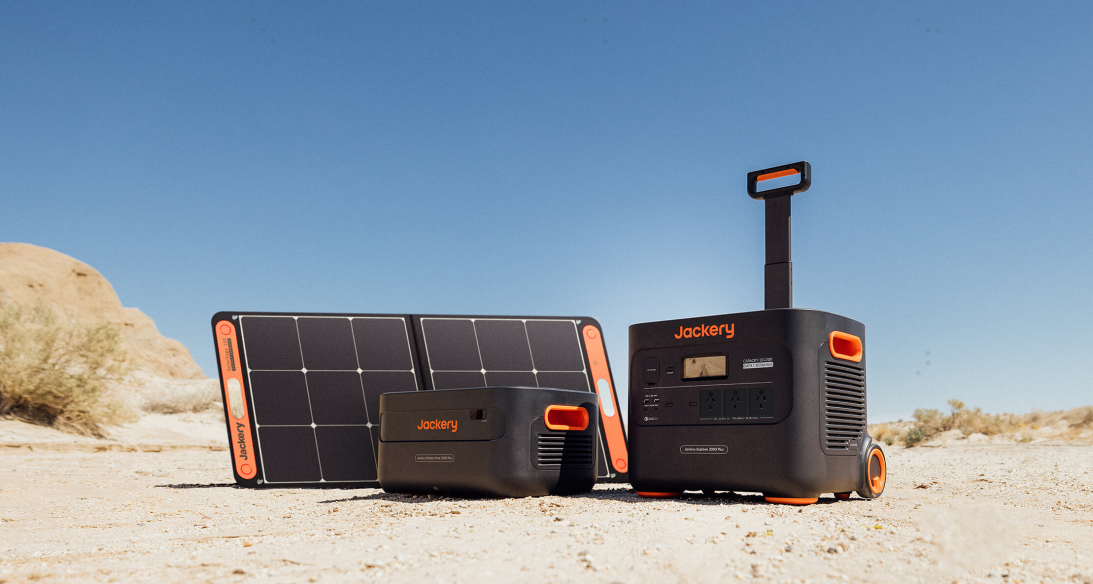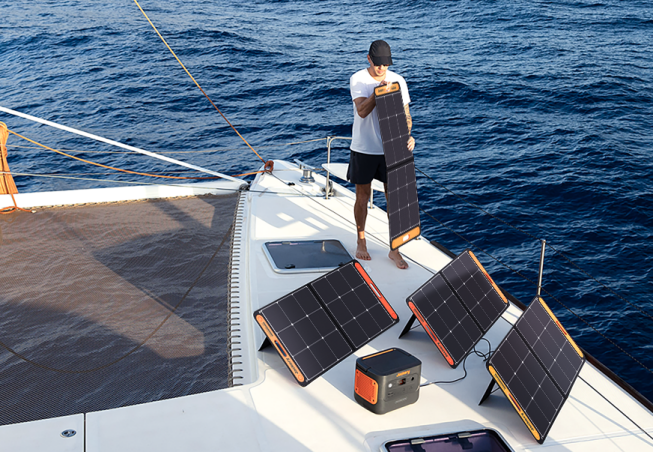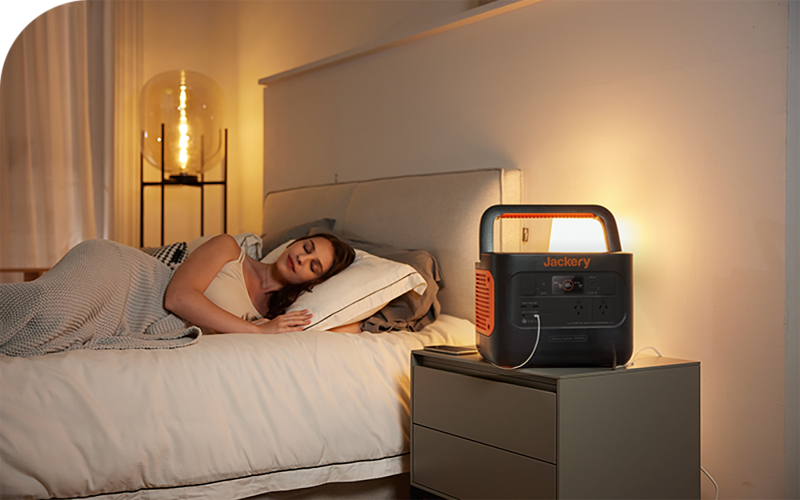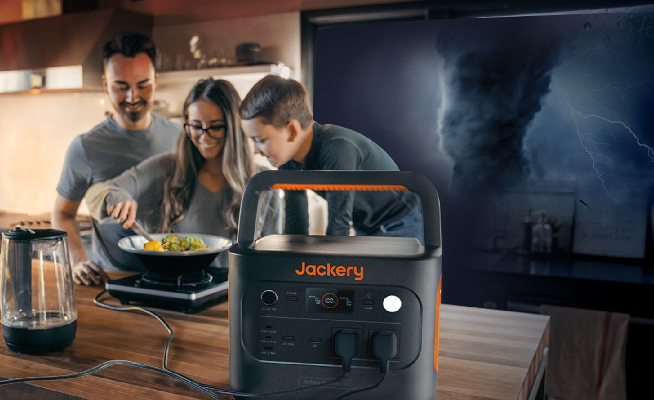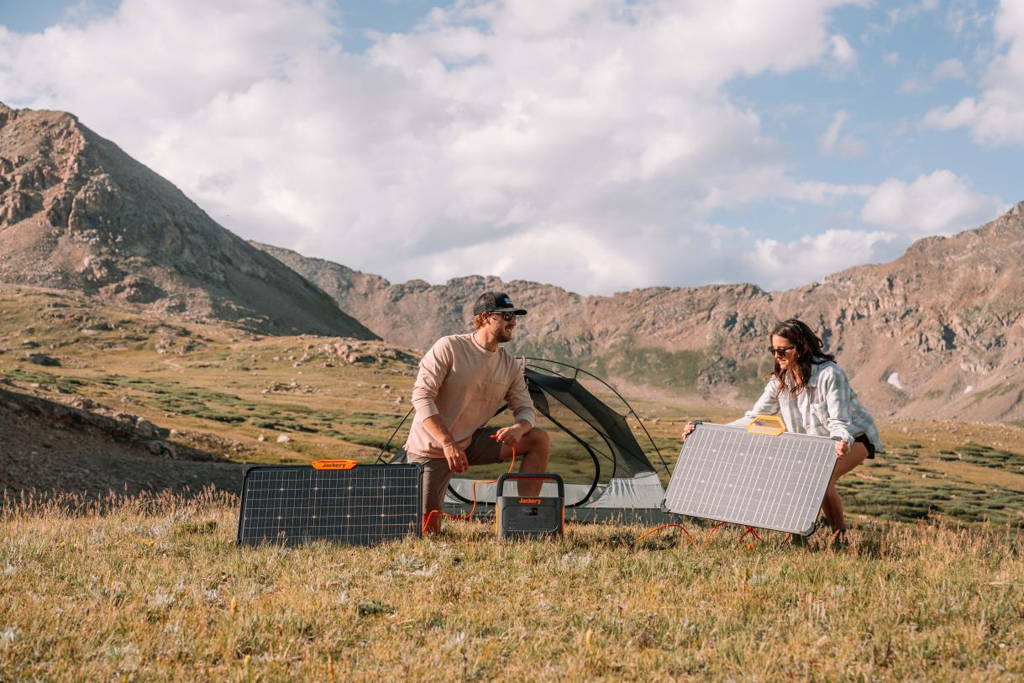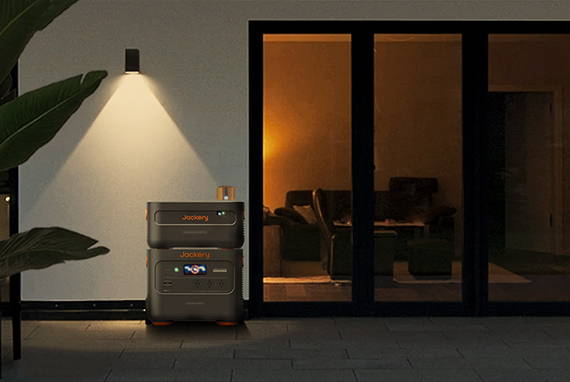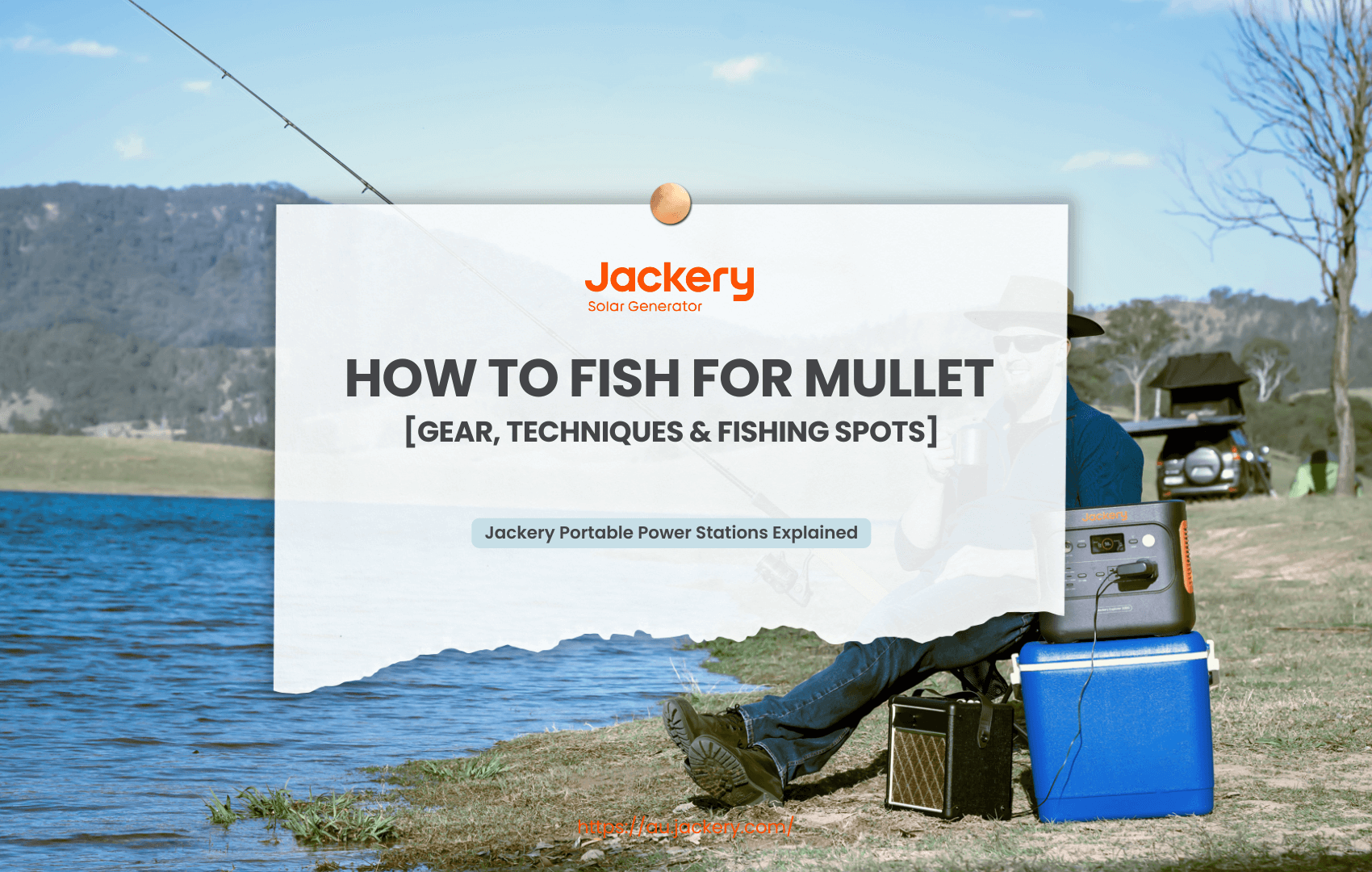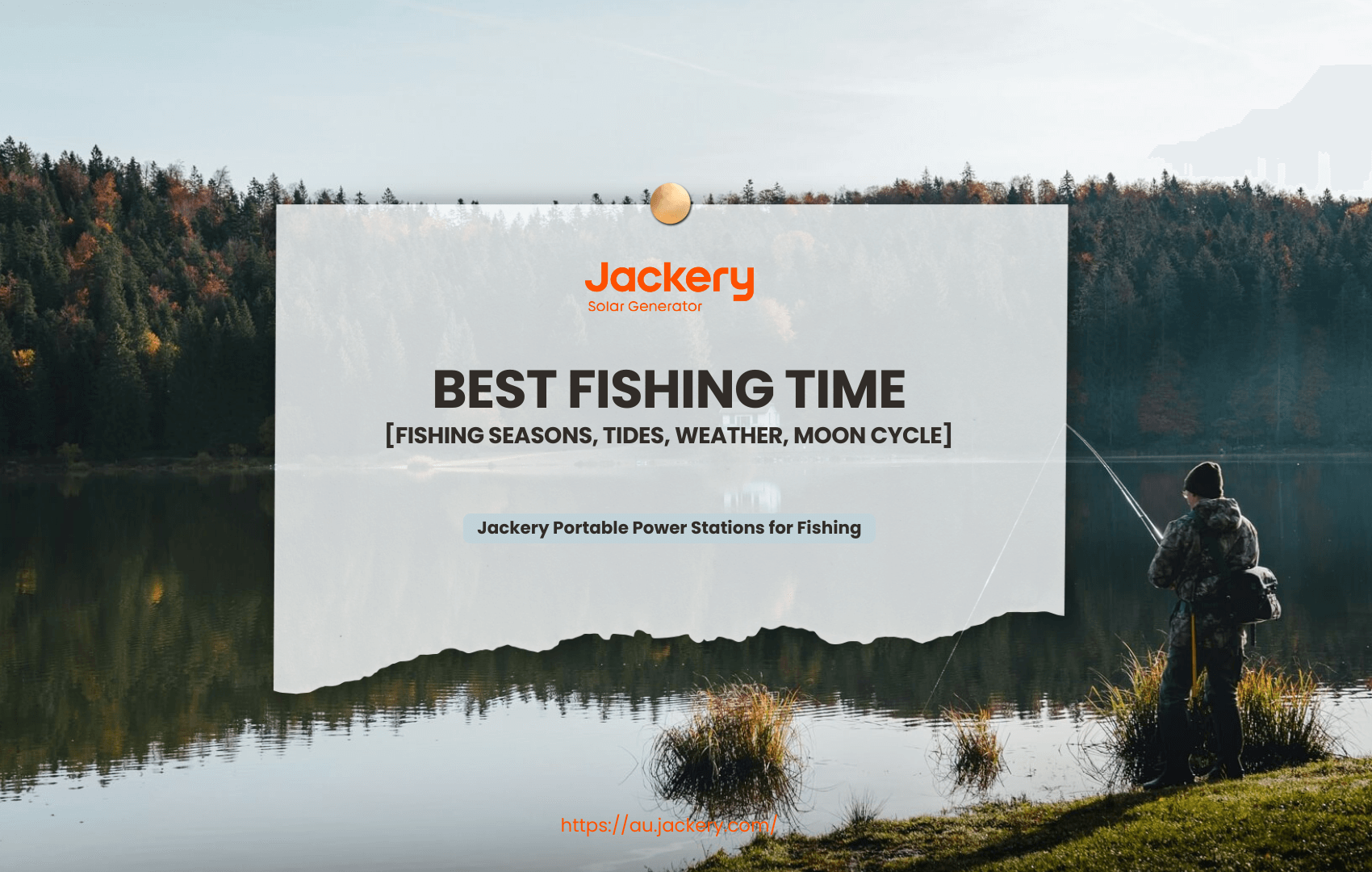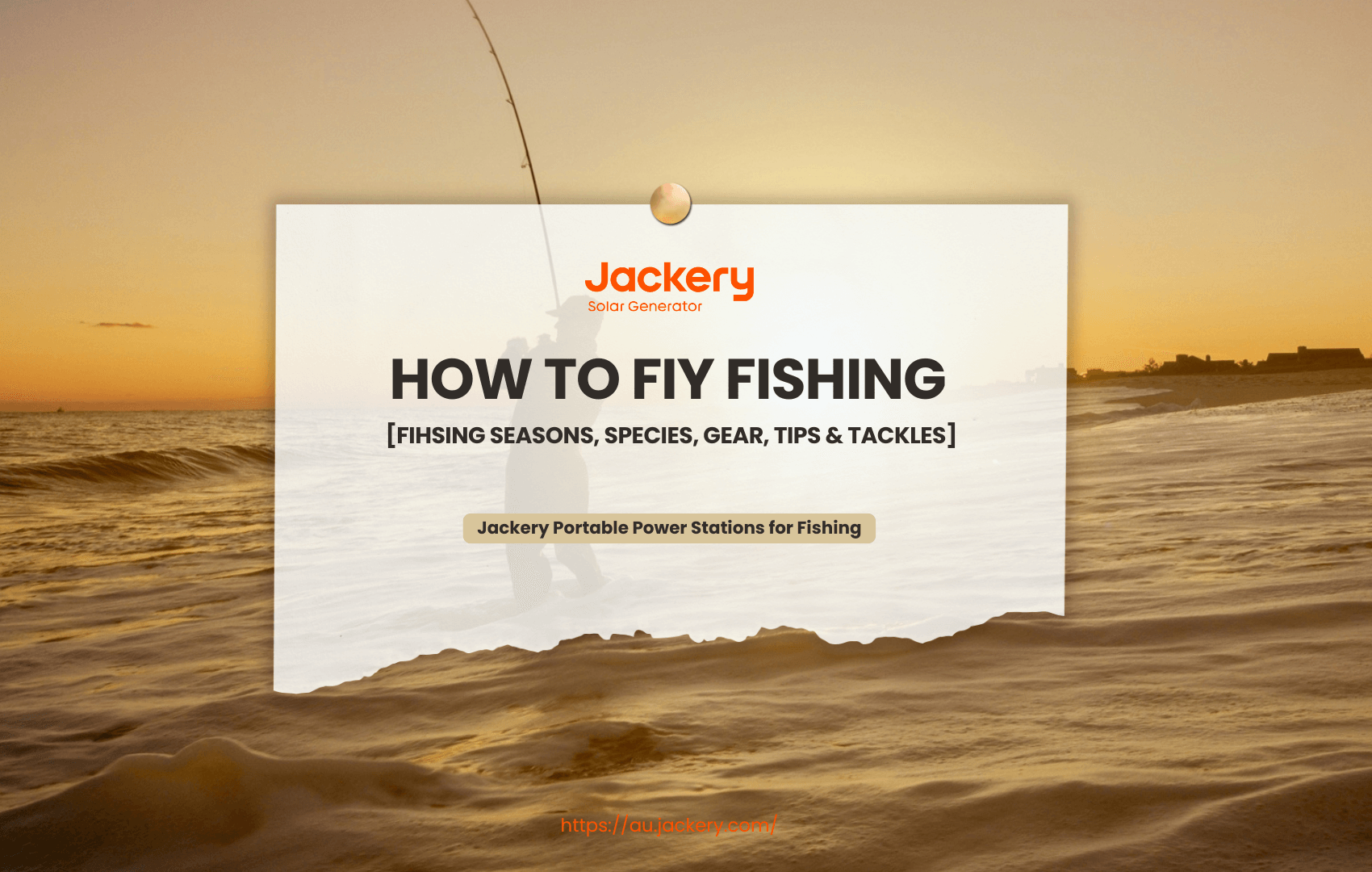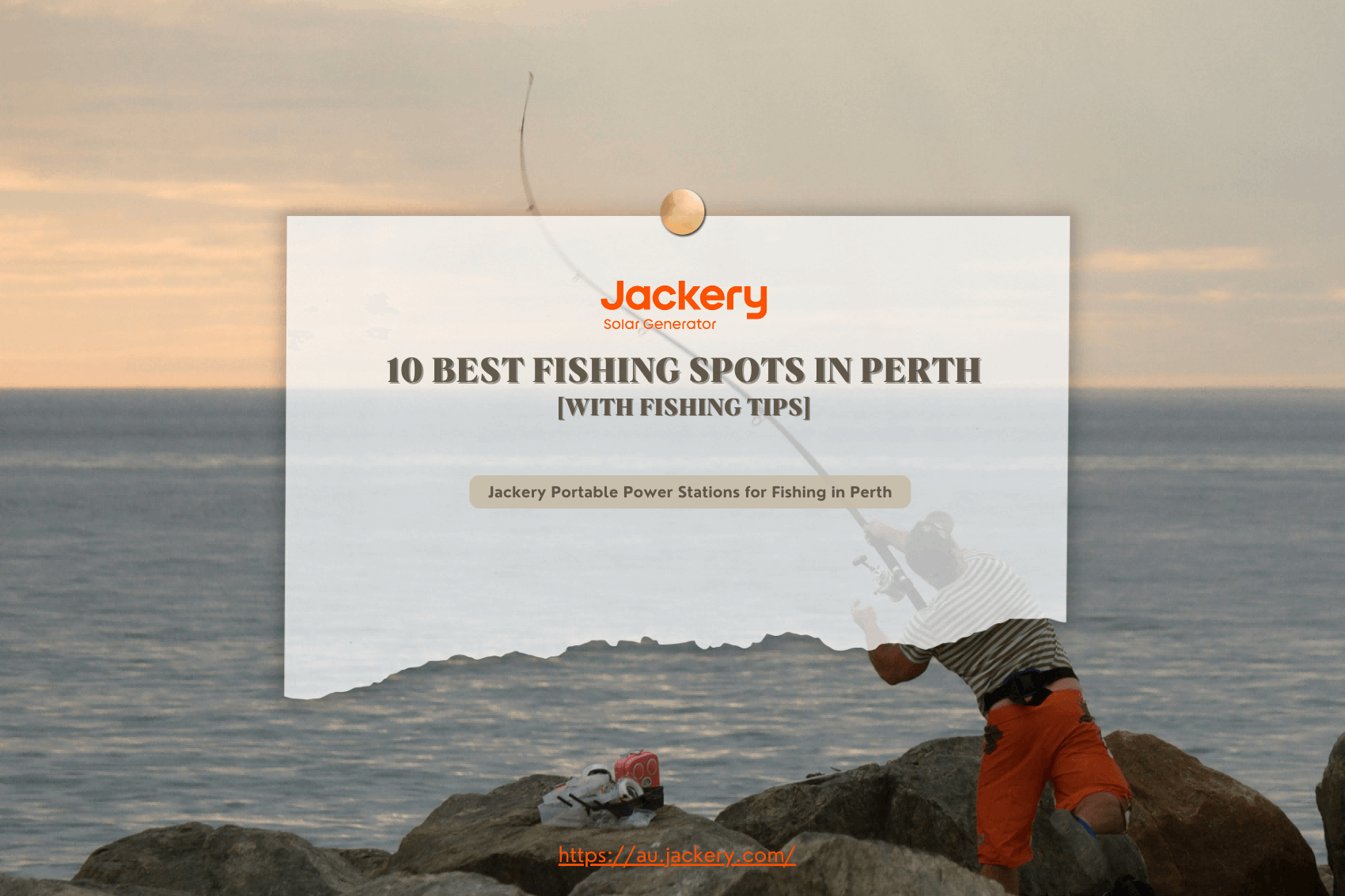|
Key Takeaways: |
|
- Mullet is commonly found in estuarine, coastal, and brackish environments. - Yelloweye and sea mullet are the most commonly targeted mullet species in recreational fishing. - Mullet is most active during warmer months and around tide changes in shallow waters. - Float and running sinker rigs are ideal for presenting baits naturally to mullet. - Responsible catch and release techniques help preserve fish health and local ecosystems. - You can consider using a Jackery Explorer 300 Plus portable power station, which is more portable and has more capacity, to power your fishing gear. |
Overview of Mullet
The sport of mullet fishing is highly regarded because it provides anglers of all experience levels with an opportunity to enjoy a gratifying and easily accessible activity. In order to be successful, it is essential to have a solid understanding of the species, their habitats, and the best times to fish.
Species Overview
The mullet is a member of the family Mugilidae and can be found in the waterways of Australia. These are the species that are encountered the most frequently:
Sea Mullet (Mugil cephalus): This species, also called bully mullet, can reach a maximum length of 70 cm and a weight of approximately 6 kg. They can be found along Australia's coast from Western Australia to Queensland and New South Wales.
Yelloweye Mullet (Aldrichetta forsteri): These fish are tiny and can grow up to 45 cm. They are easily identified by their brilliant yellow eyes. From Newcastle in New South Wales to Kalbarri in Western Australia, they live in bays, estuaries, and inshore waters along the southern coast.
Habitat
Mullet has a remarkable degree of adaptability and can be found in a variety of environments, including:
Coastal and Estuarine Waters: They are commonly found in shallow nearshore environments such as harbours, bays, and estuaries.
Freshwater Reaches: Some species venture into the lower freshwater reaches of rivers, tolerating a wide salinity range.
Structures: Piers, jetties, and other structures often attract mullets because they provide food and shelter.
Fishing Times
Timing your fishing trips can significantly impact your success:
Seasonal Patterns: Mullet can be caught year-round in Victoria, but summer is particularly productive.
Daily Activity: Dawn and dusk are prime times, as mullets are more actively feeding during these periods.
Tidal Movements: Although mullets tend to travel closer to shore with incoming tides, fishing around tide shifts can be an efficient strategy for catching them.

How to Fish for Mullet? Different Techniques
A wide variety of strategies are available for mullet fishing, making it appropriate for anglers of varying skill levels and preferences. Having a grasp of these techniques can make your fishing experience more enjoyable, regardless of whether you are a rookie or an experienced angler.
Rod and Reel Fishing
The use of a rod and reel is a common technique for catching mullets, particularly when the individual being targeted is a larger variety, such as the sea mullet. There is a recommendation for a light tackle setup:
Rod: Approximately 3.6 meters with a sensitive tip to detect subtle bites.
Reel: Size 2500 spinning reel.
Line: 2 kg braid mainline with a 2-meter, 2 kg monofilament leader.
Hooks: Size 12 hooks are effective due to the mullet’s small mouth.
Using bread crumbs or bran to berley can be an effective way to attract mullet to your region. Mullets have sensitive jaws that are prone to tearing, so you should carefully lift the rod to set the hook when you feel a consistent tug against it.
Float Fishing
Float fishing is most successful in waters that are completely calm, such as harbours and estuaries. You are able to suspend the bait at a depth of your choosing by using a straightforward float rig. Bread is a bait that is frequently used, and it is shaped around the hook. Bite detection can be improved by keeping an eye out for movement on the float.
Cast Netting
Cast netting is an effective method for fishing for mullet in regions where it is legal, particularly for catching bait. A mono-cast net with a mesh size of one inch and a length of six feet can help capture many fish at the same time. When utilising this procedure, it is vital to use the appropriate technique and take safety precautions.
Fly fishing for mullet can be challenging but rewarding. Using small, natural-looking flies that mimic insects or bread can entice mullets, especially when they are feeding near the surface. Stealth and accurate casting are crucial, as mullet can be easily spooked.
Bait Selection
Mullet is known to feed on a variety of baits:
Bread: A traditional and effective bait, especially when used in conjunction with barley.
Cockles, Worms, and Peeled Prawns: Particularly effective for yelloweye mullet.
Minced Meat: An unconventional bait that has proven successful in some regions.
Berleying Techniques
Creating an effective berley mix can significantly increase your chances:
Bread Crumbs: A base ingredient that disperses well in water.
Pilchards: Adding a couple of mashed pilchards can enhance the scent trail.
Bran: Helps in creating a cloud that attracts mullet.
Sustainable Fishing Methods for Mullet
The conservation of Australia's mullet populations and the maintenance of the health of marine ecosystems are both imperatively dependent on the use of sustainable fishing techniques. It is possible for fishermen to enjoy fishing while also helping conservation efforts if they use responsibly responsible fishing tactics.

1. Adopt Selective Fishing Methods
Utilising selective fishing gear minimises bycatch and reduces habitat damage:
Haul Seine and Tunnel Nets: In Queensland, these methods are prevalent for sea mullet fishing. They have low to negligible impacts on vulnerable species and seafloor habitats.
Gill and Haul Nets: The Peel-Harvey Estuarine fishery in Western Australia employs these nets, ensuring sustainable harvests with minimal environmental impact.
2. Support Certified Sustainable Fisheries
Opting for mullet from certified fisheries promotes sustainable practices:
Marine Stewardship Council (MSC) Certification: The Lakes and Coorong fishery in South Australia and the Peel-Harvey Estuarine fishery have both received MSC certification, a sign of their strict adherence to sustainability guidelines.
GoodFish Guide: This resource helps consumers make informed selections by offering information about sustainable seafood options, such as mullet species.
3. Practice Responsible Catch and Release
Ensuring the survival of released fish is crucial:
Use Appropriately Sized Hooks: The likelihood of deep hooking, which can be lethal to fish, is decreased when using hooks that are also larger.
Maintain Tension: Keeping the line tight prevents fish from swallowing the hook deeply.
Handle with Care: Avoid suspending fish by the hook and minimise the amount of handling you do to limit the risk of stress and damage.
4. Protect and Restore Habitats
Healthy habitats are vital for mullet populations:
Conserve Coastal Wetlands: Mullet relies on wetland areas as both breeding sites and nurseries for their young. The preservation of these places is beneficial to the ecosystem as a whole.
Support Habitat Restoration Projects: Initiatives such as Aquaculture Gladstone's discharge of sea mullet fingerlings into Lake Awoonga help replenish the population.
5. Engage in Community and Education Programs
Community involvement enhances sustainable fishing efforts:
Participate in Local Conservation Efforts: The promotion of shared responsibility can be accomplished by engaging with local groups that are focused on sustainable fishing.
Educate Fellow Anglers: Through the dissemination of information regarding sustainable practices, you can stimulate wider adoption and reap long-term advantages.
Best Locations for Mullet Fishing in Australia
There is a wide variety of good spots in Australia that are ideal for mullet fishing. Each of these locations has its own distinct ecosystem and features large mullet populations. In the event that you are interested in catching sea mullet along the eastern coastline or yelloweye mullet in the southern estuaries, the following are some highly recommended locations to consider:

Victoria
Inverloch & Anderson Inlet: This region is well known for its estuarine fishing. Especially in the warmer months, yelloweye mullets are abundant in Anderson Inlet, a small estuary where the Tarwin River meets the Bass Strait. Mullet has great feeding grounds on the intertidal mudflats of the entrance.
Cape Paterson: Great opportunities for surf and rock fishing may be found at Cape Paterson, which is situated along the Bass Coast. Particularly well-known for its mullet and salmon fishing, Undertow Bay is a popular destination.
Inverloch & Anderson Inlet: This region is well known for its estuarine fishing. Especially in the warmer months, yelloweye mullets are abundant in Anderson Inlet, a small estuary where the Tarwin River meets the Bass Strait. Mullet has great feeding grounds on the intertidal mudflats of the entrance.
South Australia
Coorong National Park: Mullet fishing is ideal in the Coorong, which is located more than 130 kilometres to the southeast of Adelaide. Healthy populations of sea mullet and yelloweye mullet are supported by the distinctive combination of habitats that are found in both saltwater and freshwater environments.
Marion Bay: Marion Bay, which is located on the Yorke Peninsula, is famous for the mullet runs that occur during the autumn. During this time of year, the local jetty and the beaches in the surrounding area provide fishermen with excellent opportunities to fish.
Hillocks Drive (Butlers Beach): This region, which is also located on the Yorke Peninsula, is well-known for its rock fishing and surfing waters. Anglers love it because of the seasonal streams of mullet and salmon that they may catch there.
Western Australia
Wilson Inlet: Wilson Inlet is a coastal estuary near Denmark that hosts both yelloweye and sea mullet. Mullet fishing is easy in this inlet because of its protected waters and the abundance of food sources available there.
New South Wales
Lake Illawarra: Lake Illawarra is a coastal lagoon located south of Wollongong. It is well-known for accommodating a wide variety of fish species, notably mullet. The lake's estuary nature offers exceptionally favourable fishing opportunities for mullet.
Tasmania
Derwent Estuary: There are opportunities to capture yelloweye mullet throughout the entire year in the Derwent Estuary, which flows past Hobart. Healthy mullet populations are supported by the relatively calm waters of the estuary as well as the rich food source.
There are more fishing spots that you may have interests:
Best Fishing Spots in Adelaide
Best Fishing Spots in Gold Coast
Equipment for Fishing Mullet in Australia
It is vital to equip yourself with the appropriate gear to fish for mullet successfully in Australia. Because these fish have small mouths and are naturally cautious, a light and sensitive setup will increase your chances of catching these elusive fish.

Rods and Reels
To achieve the level of sensitivity required to detect even the most slight bites, it is recommended to use a light graphite spinning rod that is roughly 7 feet in length and rated between 1 and 3 kilograms or 2 and 4 kilograms. Combine your rod with a spinning reel that is between 1000 and 2500 in size. Make certain that it has a smooth drag mechanism so that it can handle the vigorous runs that mullet are known for.
Line and Leader
Use a monofilament or fluorocarbon line that weighs between 4 and 6 pounds (about 2 and 3 kilograms). Mullet fishing can be accomplished with these lines because they have low visibility and appropriate strength. A fluorocarbon leader weighing between 4 and 6 pounds should be attached to your main line. This configuration offers some resistance to abrasion and helps to retain stealth in clear seas.
Hooks
Utilise fine-gauge long shank hooks ranging from size 14 to size 10 while fishing for mullet because their mouths are shallow. Hook-up rates are increased with these sizes, and the fish are not deterred in any way.
|
Rigs for Mullet Fishing |
|
|
Running Sinker Rig |
A little sinker should be inserted following the threading of a swivel onto your main line. Ensure that your leader and hook are attached to the swivel. Because of this arrangement, the bait is able to travel naturally with the current. |
|
Float Rig |
When you want to suspend your bait at the desired depth, you can use a bubble float or a quill. This strategy is extremely effective in quite calm waters where mullet eats close to the surface. |
Berley (Chum)
Creating an effective berley trail can attract mullet to your fishing area:
Ingredients: Use a mix of bread crumbs, bran, or crushed fish to create a scent trail.
Application: Introduce small amounts regularly to keep mullet interested without overfeeding them.
Additional Accessories
Landing Net: A soft-mesh landing net helps safely secure mullets without causing harm.
Polarised Sunglasses: These reduce glare and help in spotting mullet schools in clear waters.
Bait Options: Fresh baits like silverfish, prawn pieces, or pilchards are effective.
Portable Power: The best mullet fishing spots often aren't near power outlets. They could be a secluded beach, a quiet estuary bank, or an inaccessible pier. A portable power station, like Jackery Portable Power Station, provides independent power, allowing you to maximise your time in these prime locations.

Besides, we also have some fishing guides for carp, trout, and more fishes.
Jackery Portable Power Station for Mullet Fishing
Whether land-based or from a small boat, Mullet fishing often involves targeting specific conditions and locations, which can sometimes be remote or involve early starts/late finishes. A Jackery Portable Power Station can be a surprisingly useful piece of gear for mullet fishing.
Mullet fishing often involves targeting specific tide windows, which can mean very early mornings before dawn or late evenings after sunset. A powerful, rechargeable headlamp or area lantern is crucial for baiting hooks, setting up gear, or packing up in the dark. A Jackery ensures these are always fully charged.
If you're targeting mullets from a small boat or kayak, a portable fish finder or GPS is invaluable for identifying deeper channels, sand flats, or structures where mullets might congregate. A Jackery can reliably power these devices for your entire session. Mullets are best eaten fresh. A small 12V portable fridge/cooler (powered by a Jackery) keeps your catch cool and extends its freshness, especially on warm days. It also keeps your drinks and snacks chilled.
Jackery Explorer 300 Plus
Unlike smaller power banks, with 288Wh capacity (300W power output, 600W surge), the 300 Plus provides a full AC (alternating current) outlet, allowing you to power or recharge a broader range of gear. If you're using a portable, higher-end fish finder (often 240V or requiring an AC adapter), the 300 Plus can power it for extended periods. A hot brew on a chilly morning or late evening (when mullets are often targeted) is a game-changer for comfort. The 300 Plus can handle smaller travel kettles.

Lightweight (Approx. 3.75 kg / 8.27 lbs): This is crucial. Mullet fishing can involve walking to spots, carrying gear, or stowing it on a small boat or kayak. The 300 Plus is light enough not to be a burden. Its compact dimensions mean it won't take up much precious space in your tackle box, backpack, or on a small boat.
Long Lifespan (3,000+ Cycles): Mullet fishing can be a frequent activity. The LiFePO4 battery ensures the 300 Plus will endure thousands of charge cycles, providing reliable power for many years to come. LiFePO4 batteries are highly stable and less susceptible to thermal runaway, offering peace of mind when used near water or in variable weather conditions often encountered along coastlines.
Flexible Recharging Options: Mullet fishing often happens in sunny coastal or estuarine environments. Pairing the 300 Plus with a compact Jackery SolarSaga 100W solar panel allows you to constantly top it up during your session, providing sustainable, off-grid power. You can recharge it from your car's 12V outlet while driving to or from your fishing location. Recharges quickly (around 2 hours) when you're back home or at a campsite with mains power, ensuring it's ready for your next outing.
|
Jackery Explorer 300 Plus Running Time |
|
|
Portable Cooler (90W) |
2.5H |
|
Electric Fish Finder (20W) |
8.2H |
|
GPS Device (30W) |
6.1H |
|
Phone (29W) |
13 Times |
|
VHF/UHF Radios (80W) |
2.7H |
(*The working hours are only for reference; the actual working hours depend on your usage.)
FAQs
The following are the frequently asked questions about fishing for mullet in Australia.
1. What is the best bait for mullet?
Cheese, bread, dough, and peeled prawns are also good mullet baits. These baits work especially well when combined with berleying techniques to draw mullet to your fishing area.
2. What is the easiest way to catch mullet?
One of the easiest ways to catch mullet is using light tackle with a float rig, tiny hooks, and bait like bread or dough. This method works particularly well there since mullets frequently eat close to the surface in placid environments like estuaries and inlets.
3. How do you catch mullet in Australia?
Anglers frequently use light spinning gear with tiny hooks and bait like bread or peeled prawns to capture mullet. Success rates can be raised by fishing at dawn or dark and around tidal changes, especially in estuaries where mullets are frequently found.
4. What is the best rig for mullet fishing?
The float rig works really well for mullet fishing. It lets you hang bait at the right depth and allows you to see bites. This arrangement is quite helpful when mullet eats close to the surface in calm seas.
5. What is mullet's favourite food?
The main food source for mullet is microscopic plants and algae, including diatoms, filamentous green algae, and blue-green algae. They also eat detritus, which includes decaying plant and animal debris, and macroalgae like sea lettuce.
Final Thoughts
Mullet fishing is a very fulfilling activity that combines skill, perseverance, and local knowledge. Anglers can have successful and ecologically conscious expeditions by selecting the appropriate equipment, learning about mullet habits, and using sustainable practices.
Australia has several great places to fish for mullet, from South Australia's beaches to Victoria's estuaries. A good berley trail and a light gear setup will put you in a fantastic position to catch high-quality fish. This hobby can be enjoyed for many generations if the environment and fisheries are respected. Find your location, get your equipment, and enjoy the excitement of mullet fishing.

